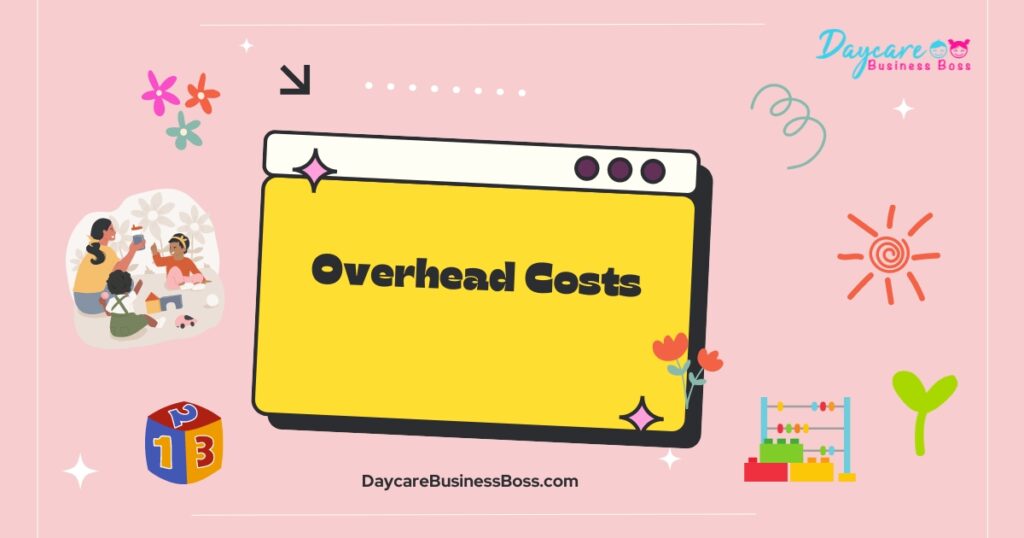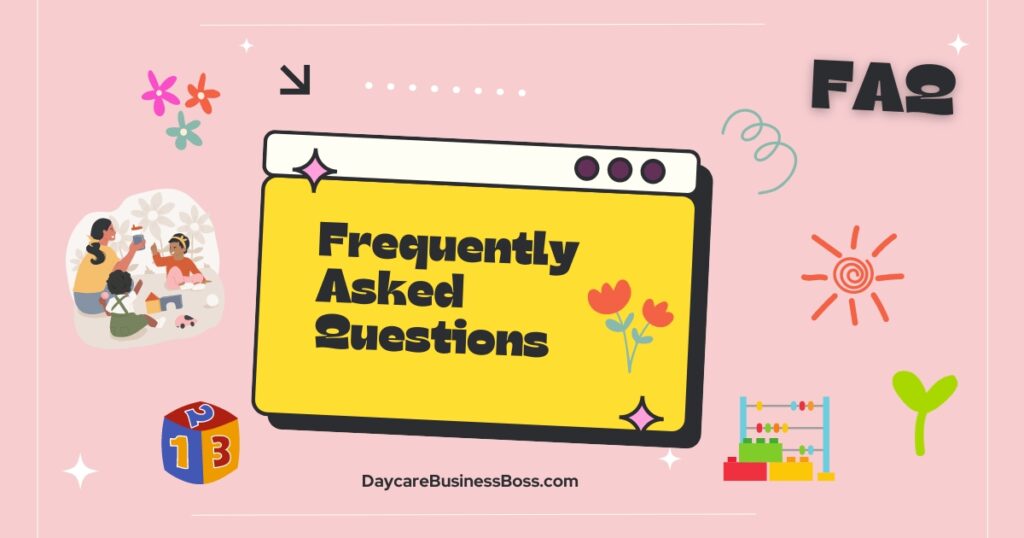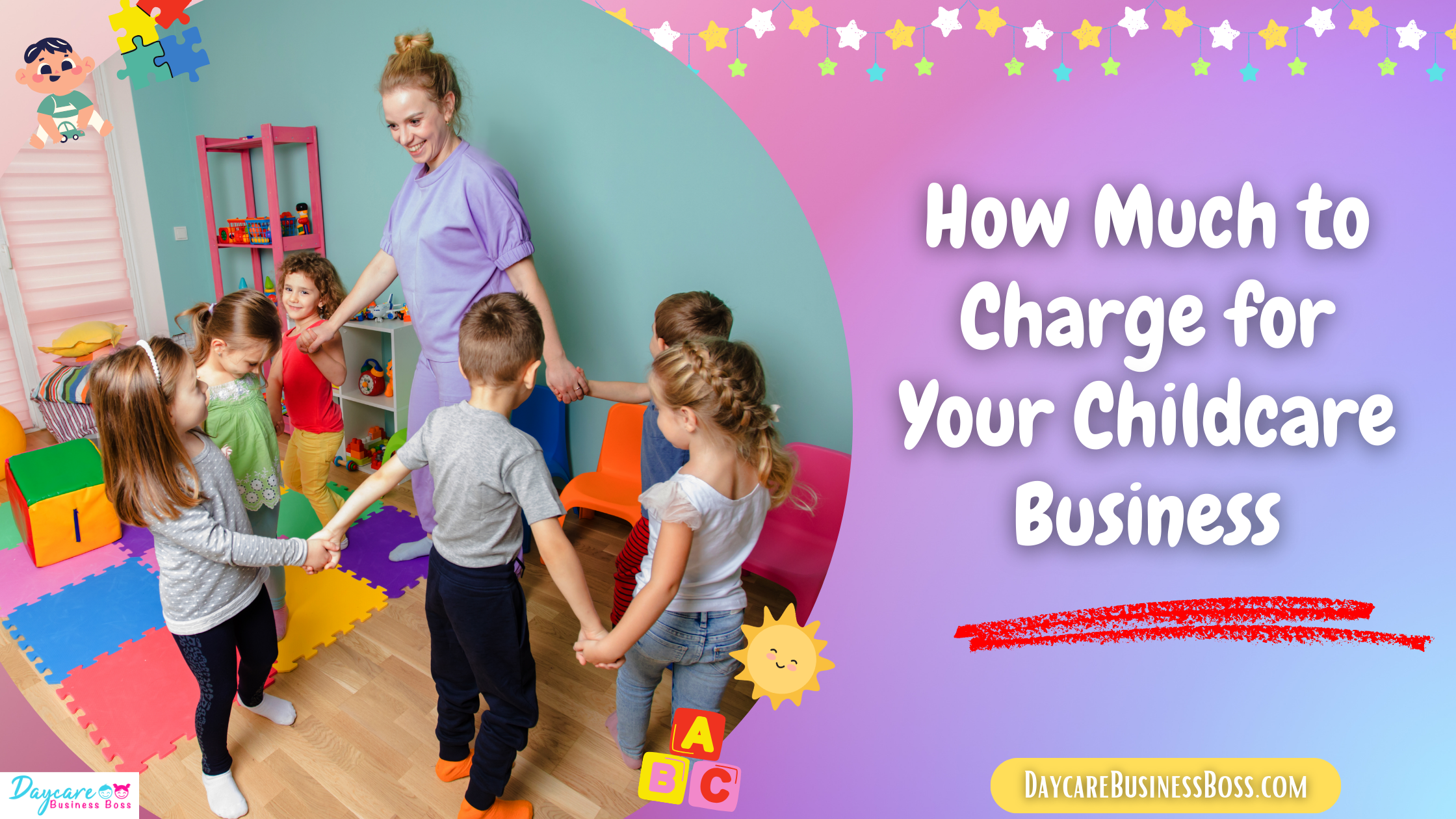How much you charge for your childcare business will depend on your cost of doing business, the profit you want to make, the going rates in your area, and what families in your area can actually afford.
To know how much to charge for your childcare business you must first measure the costs of running your business. This will involve making a list of your assets and expenses and it’s always a good idea to create a budget and a business plan.
A list of your assets will include things like real estate, tangible property such as daycare equipment like furniture, fixtures and educational supplies. Expenses will include things like permits and licenses, advertising, utilities, insurance and repairs. You should also make a list of your financial goals and what part you will play in the running of your childcare business.
Make educated guesses as to how much all of these things will cost. If you’re unsure, do some research that will get you as close to the actual costs as possible. When you’ve figured up all of the amounts, add them all up and this figure will comprise most of startup costs for your daycare business.
Three factors to consider in calculating how much to charge for space in your center are labor and materials, overhead and profit.
Child to Teacher Ratio
An important factor to consider for your childcare business is the child to teacher ratio; state laws will limit the number of children you can take in. These limits are established so that each child will get his or her fair share of care and resources, and also so that teachers will not be overwhelmed.
Lower child to teacher ratios means that your child will get more specialized attention at your daycare; this is the hallmark of a quality childcare situation and as such, means you can charge more for your services.
Specialized attention to a child’s unique needs in a childcare situation is also an important stepping stone to a quality education for your child’s future. It’s the one thing that many parents are looking for and are willing to pay more for.
Laws and guidelines for daycare vary from state to state, and can effectively put a cap on your earnings due to this child to teacher ratio. If so, you’ll need to come up with some creative cutbacks to reach your financial goals in your daycare business or consider starting up more than one daycare.
As an example of child to teacher ratio for programs with children between the ages of 18 to 30 months, the ratio is 1:6. The maximum group size it 12 toddlers. The ratio for programs for teacher to child school-age children is 1:14. One teacher and one aide may supervise up to 28 children.
The most important reason for these child to teacher ratios is that all children learn in different ways and have different needs. All children need to be stimulated in order to grow and learn and the job becomes impossible when the number of children in one person’s care are too many.
Child to teacher ratio plays a big part in the quality of your child’s education, and early education has a significant impact on future learning. The ideal child to teacher ratio will vary depending on several factors.
Age of students, their academic needs and the skills of teachers will all have a part in determining your child to teacher ratio. Older children and those with learning difficulties will need more attention and help, thus the child to teacher ratio will need to be reduced.
In the recent past, the child to teacher ratio question has become an issue among educators. There has been a push to reduce the number of students per teacher in hopes of improving the quality of education children receive. You should take this in to consideration when computing your labor costs.
You’ll have to provide an even lower child to teacher ratio for infants; this will raise your labor expenses but means you can charge more for infant and toddler care.
Labor Costs
Labor costs include the wages and benefits you will pay your employees. Include your salary as the owner in the total labor charge if you don’t take it from net profit. The cost of labor is usually expressed as an hourly rate. When you calculate labor costs, include hidden costs like payroll taxes and benefits, etc.
Your child teacher ratio will very much effect how you price your daycare business. The fact that you are offering a structured, educational setting for young children should also figure into how you price your services.
After you determine your child teacher ratio, then you will know how to price the tuition for a child who attends your daycare full time. For instance, if your child teacher ratio is 5 to 1, (5 children per 1 teacher), and your pay your teachers $15 per hour, (including wages, taxes and benefits), then the labor cost will be $3.00 per child per hour.
Figure into this your material cost, which you’ll have to estimate at first until you have a recorded history. The usual amount to figure for material costs is 45%.
Overhead Costs

Overhead costs for your daycare business will include things like nonlabor and the indirect expenses required to run your business on a daily basis. You will add up all of your expenses for one year, excluding labor and materials. You then divide this number by the cost of labor and materials; this determines your rate of overhead.
Since you’re just starting your childcare business, you won’t have a history of these costs. In this case, you’ll have to estimate the number. Simply figure that your overhead costs will make up about 30-40% of your labor and materials cost.
Most daycares charge parents according to a child’s age. Parents of children not yet toilet trained, or only partially toilet trained, will be charged more. The rate will sometimes be as much as 20 percent more than older children.
Profit
As a child care operator, you can most likely expect to earn between 9 and 14 percent of your gross revenue. Calculate labor and materials costs and add them together to get a rough estimate of how much you should charge for your daycare services.
To test your prices in the marketplace, find out what other daycares are charging. If they are charging less, that doesn’t necessarily mean you should drop your prices. How much will dropping your prices reduce your profitability? Realize that if you don’t have enough of a financial cushion, your business is more likely to fail.
Other daycares may be charging less because their services don’t measure up to yours. If you’re wondering why their services are less, do some research on what families in your target market are able to pay.
The way to check on family incomes in your area is to go to your public library and ask the librarian to show you how to check census data on the income ranges for your community. This data can also be checked online.
Next, take your cost- plus-desired profit figure and the figure of what the census data says you can afford, and see how closely they match. This figure will help a lot in determining how much you should charge for your daycare business.
Of course, you always have to keep in mind that families are trying to keep to their budget, and your goal is to give them the best child care their money can buy. It’s your responsibility as a daycare provider to have a great child care program in keeping with your budget.
How your charge for your childcare services is up to you; you can charge hourly, weekly or even monthly. You can also charge overtime fees. Most daycares charge on hourly rate for each hour that a parent picks a child up late. For instance, if a mother picks her child up one hour late for an entire week, that’s an extra $25 you are allowed to charge for. This lets the parents know that your time is valuable and that you expect them to stick to the schedule you outlined for them in the first place.
Government Subsidy Programs
Consider increasing your clientele by investigating government subsidy programs so that lower income families can enroll their children in your daycare. Childcare subsidies are also called vouchers and fee assistance, and each state provides them because they receive funds from the federal government through their state-run childcare subsidy program.
Parents have to meet certain residency, income and work/training activities to qualify for this assistance. Families can apply online or go in person of their local government offices or local research and referral agencies.
Related Questions

- What kind of insurance do I need for my daycare business?
If you’re planning to operate your daycare out of your home, your home owner’s insurance likely will not cover either liability or property. Check with your insurance provider to determine what kind of policy you’ll need.
- What should my daycare budget plan include?
Include salaries for workers, utilities, administrative and supply costs and licensing and zoning fees. These are just a few of your possible costs you’ll have when running your own daycare business.
- Are there grants or funding to help you open your daycare?
This will depend on whether you are going to set your childcare business up as a non-profit or a for profit. It may not seem fair, but there are more government programs for non-profit than daycares that are for profit. There are also significant tax advantages for non-profits.
Please note: This blog post is for educational purposes only and does not constitute legal advice. Please consult a legal expert to address your specific needs.
Now you have determined the fee, you will need this startup course and documents to continue building your business.

Meet Shawn Chun: Entrepreneur and Childcare Business Fan.
I’m a happy individual who happens to be an entrepreneur. I have owned several types of businesses in my life from a coffee shop to an import and export business to an online review business plus a few more and now I create online daycare business resources for those interested in starting new ventures. It’s demanding work but I love it. I do it for those passionate about their business and their goals. That’s why when I meet a childcare business owner, I see myself. I know how hard the struggle is to retain clients, find good employees and keep the business growing all while trying to stay competitive.
That’s why I created Daycare Business Boss: I want to help childcare business owners like you build a thriving business that brings you endless joy and supports your ideal lifestyle.


4 thoughts on “How Much to Charge for Your Childcare Business”
Comments are closed.